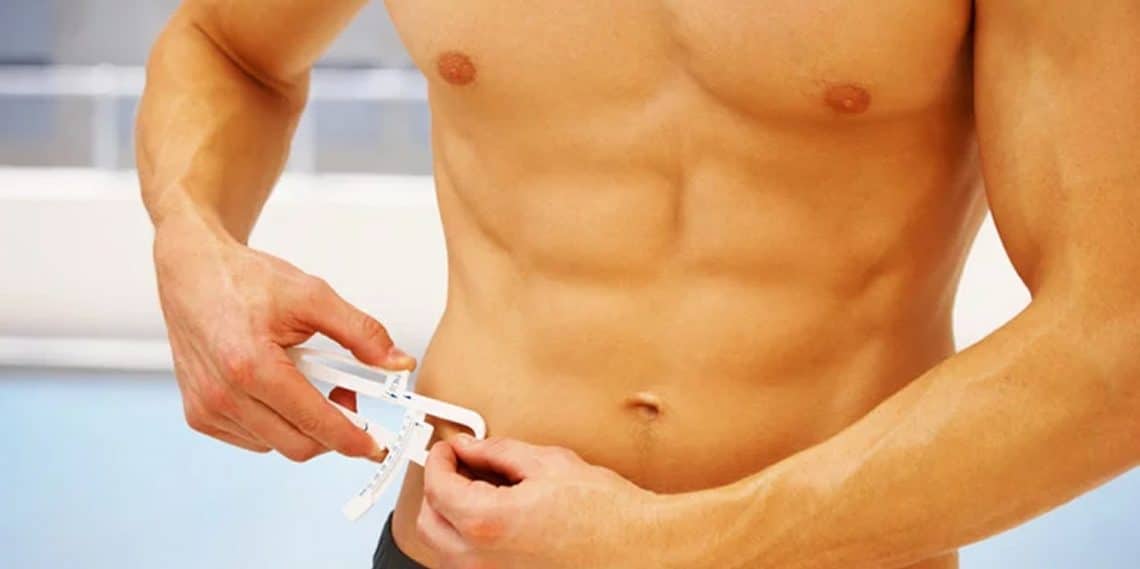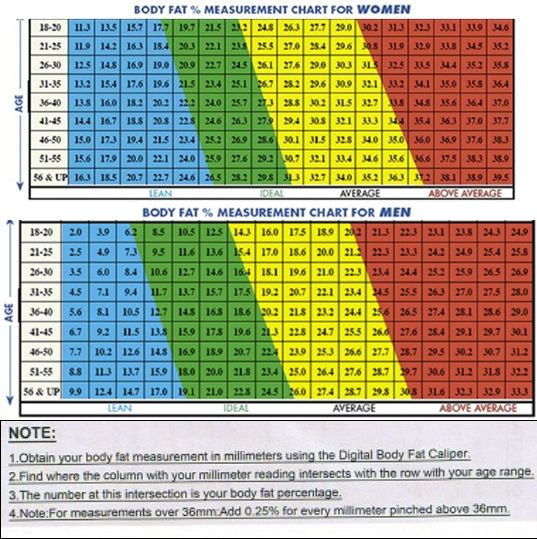
Seeing proof of your progress can be astonishing, and can serve as a huge motivator when you feel like nothing’s working or you’ve hit a weight-loss plateau. It’s also a good idea to take photos as you progress on your weight-loss journey. If and when you discover that you’re losing pounds of fat, then you’re on your way to success! Track your progress with photographs Use your body fat percentage results to determine if you are losing fat and increasing lean muscle mass. Take all the same measurements again, and compare your numbers. Let a month pass as you continue your weight-loss program. It will ask you to input several of your measurements - such as height, weight, waist, and hip circumference - and use that information to calculate your body fat mass and body fat percentage.

Next, you’re going to need an online body fat calculator.
Calves: Shifting your weight to the left foot, measure the circumference of the largest area of your right calf muscle. Now, measure your right quadricep - the circumference of the largest area of your upper leg muscle. Quads: Stand tall and transfer most of your weight to your left foot. Hips: Measure the circumference of your hips at the widest point, around the hip bones. Waist: Measure the circumference of your waist - just above your belly button is where you’ll find the narrowest spot. Shoulders: With both arms relaxing at your sides, have a friend measure around both shoulders. Bust: Measure around the fullest part of your bust.  Chest: Measure the circumference of your chest, just below the breasts. Wrists: Measure around your right wrist. Forearm: Measure the circumference of your arm just below the elbow. (You can choose to measure your left arm instead, but just make sure to use the same arm every time.) Use the tape measure to determine the circumference of your right arm just above the elbow - the place where your arm is the biggest. Neck: With a straight spine and neck, use the tape measure to measure your neck circumference. Current weight: Step on the scale and record the number in your journal. You’ll also need a scale to measure your current weight. It’s difficult to measure out-of-reach places (like your shoulders, for instance). You can take notes on your phone, or you can use a cute journal that inspires you to track your measurements regularly. Secondly, you’ll need a journal of sorts to record your measurements and progress. In order to accurately track your body fat loss and changes in body composition, here’s what you need to do: What you needįirst off, you’ll need a measuring tape - the kind that’s flexible. Tracking your progress in this way can be a powerful motivator that allows you to see positive changes in your all-around body composition - even when the number on the scale isn’t budging.
Chest: Measure the circumference of your chest, just below the breasts. Wrists: Measure around your right wrist. Forearm: Measure the circumference of your arm just below the elbow. (You can choose to measure your left arm instead, but just make sure to use the same arm every time.) Use the tape measure to determine the circumference of your right arm just above the elbow - the place where your arm is the biggest. Neck: With a straight spine and neck, use the tape measure to measure your neck circumference. Current weight: Step on the scale and record the number in your journal. You’ll also need a scale to measure your current weight. It’s difficult to measure out-of-reach places (like your shoulders, for instance). You can take notes on your phone, or you can use a cute journal that inspires you to track your measurements regularly. Secondly, you’ll need a journal of sorts to record your measurements and progress. In order to accurately track your body fat loss and changes in body composition, here’s what you need to do: What you needįirst off, you’ll need a measuring tape - the kind that’s flexible. Tracking your progress in this way can be a powerful motivator that allows you to see positive changes in your all-around body composition - even when the number on the scale isn’t budging. 
The best way to measure fat loss is to take measurements of your body, and then do a set of calculations using an online body fat calculator. While you can look at yourself in the mirror and see positive changes - a tighter, slimmer, and more muscular body, for example - it can be hard to lose track of how far you’ve come without visual reminders. Plus, you may not actually lose weight if you’re reducing body fat but replacing it with muscle. Weighing yourself on a scale doesn’t provide accurate answers, because body weight is only one measure of health - and it doesn’t show you how much body fat you have (or haven’t) lost. While in the midst of a weight-loss regimen, it can difficult to determine whether all of your hard work is actually paying off.







 0 kommentar(er)
0 kommentar(er)
